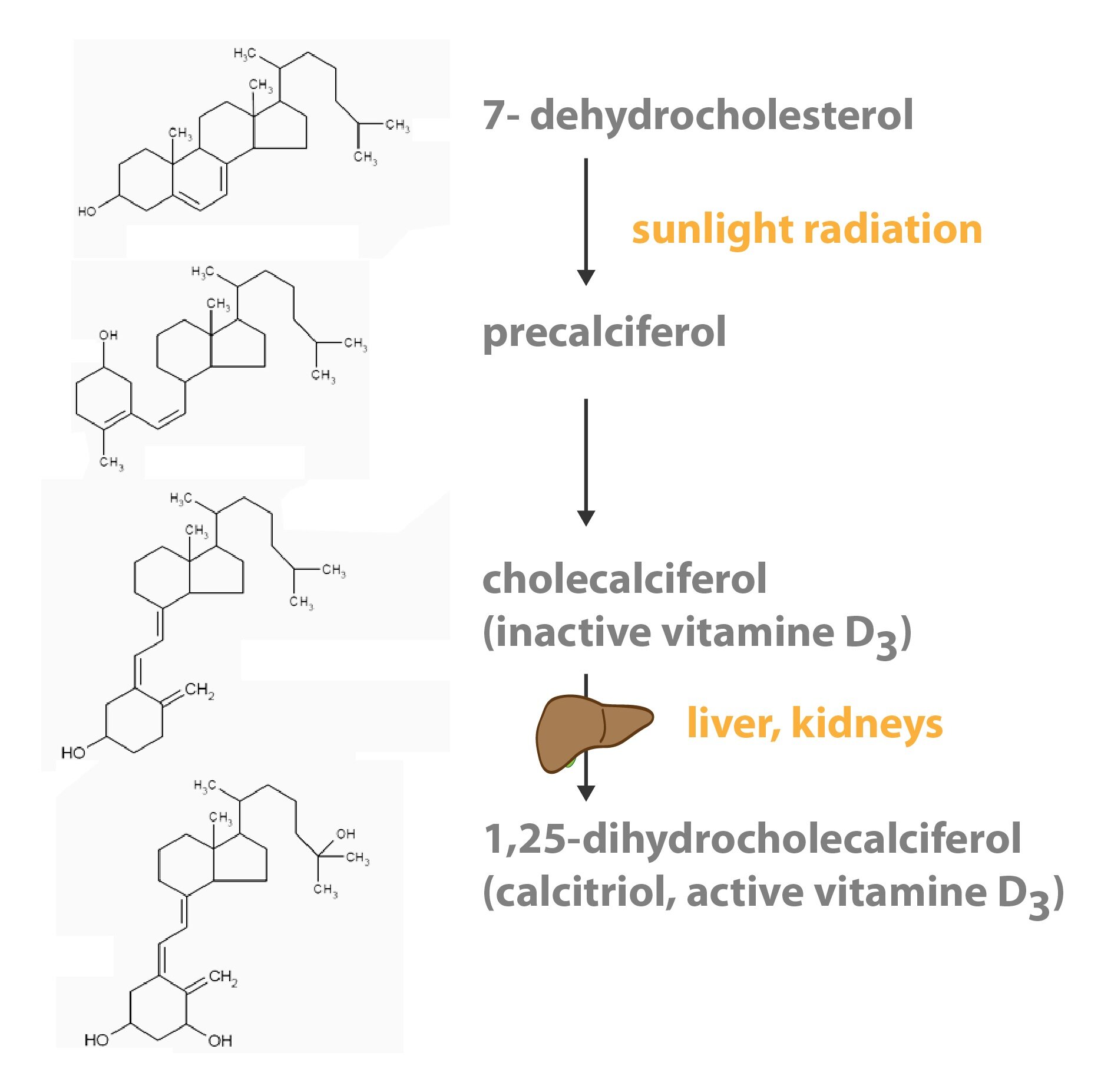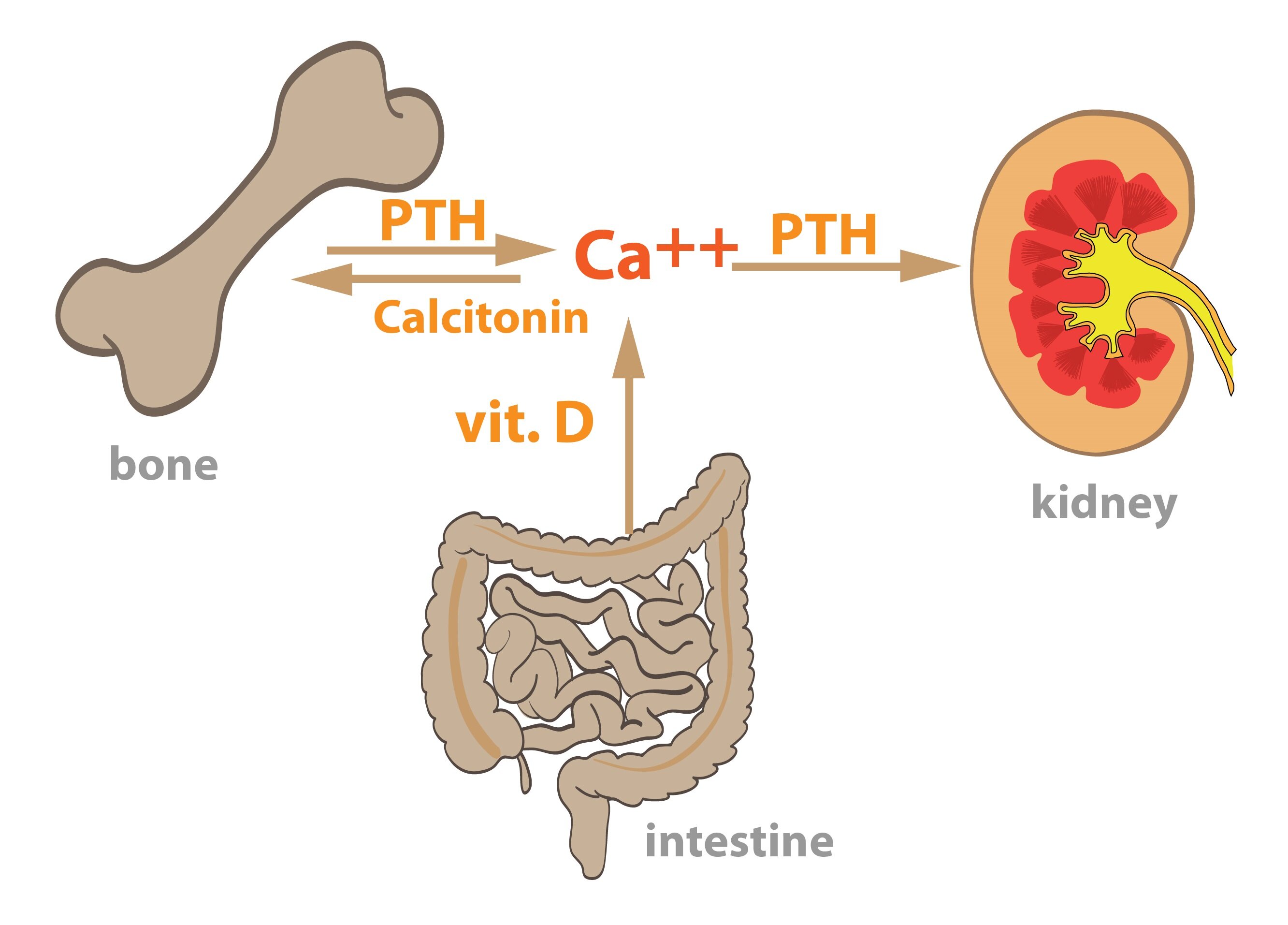Content:
1. Endocrine functions of the kidneys
_
Endocrine functions of the kidneys
The kidneys produce three important hormones: erythropoietin, calcitriol (1,25- dihydroxycholecalciferol ) and renin. They also synthesize prostaglandins, which affect many processes in the kidneys .
In addition to synthesis , the kidneys also contribute to the degradation of certain hormones – such as insulin (forms insulinase – cleaves insulin) or parathyroid hormone.
Erythropoietin
Erythropoietin is a peptide hormone which regulates erythropoiesis.
Structure and function
Erythropoietin is a glycoprotein containing 165 amino acids. Its receptors are present on the membranes of red blood cell precursors. Binding of the hormone reduces apoptosis of these cells – multiple cells survive and can therefore complete their development into mature erythrocytes.
Synthesis and inactivation
In adults, approximately 90 % of erythropoietin is synthesized in the kidneys (interstitial cells) , the remaining amount in the liver (perivenous hepatocytes) . The liver plays a key role in the production of erythropoietin during the fetal period. But in adulthood,the liver is no longer able to compensate for a potential decrease in production in the kidneys.
Clinical correlations:
For most people in end-stage renal failure, anemia with erythropoietin deficiency occurs. Doctors can administer recombinant erythropoietin to these patients.
Erythropoietin is also abused as doping substance – especially in endurance athletics (cycling) .
The main stimulus for the production of erythropoietin is a decrease in the partial pressure of oxygen in the blood flowing through the two organs. Hormone production is also supported by androgens (testosterone) , and catecholamines (β – receptors).
The main location of inactivation of erythropoietin is the liver.
Calcitriol (1,25- dihydroxycholecalciferol)
The metabolism of calcitriol is discussed in detail in Chapter 9 and in subchapter about metabolism of water and minerals. Here we will mention only the role of the kidneys in calcitriol metabolism.
Final activation of vitamin D to the active hormone calcitriol takes place in the kidneys – 1-hydroxylation of 25- hydroxycholecalciferol to 1,25- dihydroxycholecalciferol.
Calcitriol stimulates the small intestine for protein synthesis allowing absorption of Ca2+ and phosphates. This ensures the availability of Ca2+ and phosphate for bone growth. Calcitriol simultaneously activates osteoblasts to synthesize collagen.
Renin
Renin is part of the renin – angiotensin – aldosterone system (RAAS) . This system is discussed in detail in Chapter 11 and in subchapter about metabolism of water and minerals. We will only provide a basic overview here.
In the case of insufficient blood flow to the kidneys (e.g., decrease in blood volume) cells of the renal juxtaglomerular apparatus begin the synthesis of protein renin. Renin is an enzyme, which catalyzes the conversion of plasmatic angiotensinogen to angiotensin I. Angiotensin I is then converted by angiotensin converting enzyme to angiotensin II, which stimulates aldosterone synthesis and causes vasoconstriction.
RAAS participates in the regulation of mineral balance and blood pressure.
Subchapter Authors: Josef Fontana and Patrik Maďa



